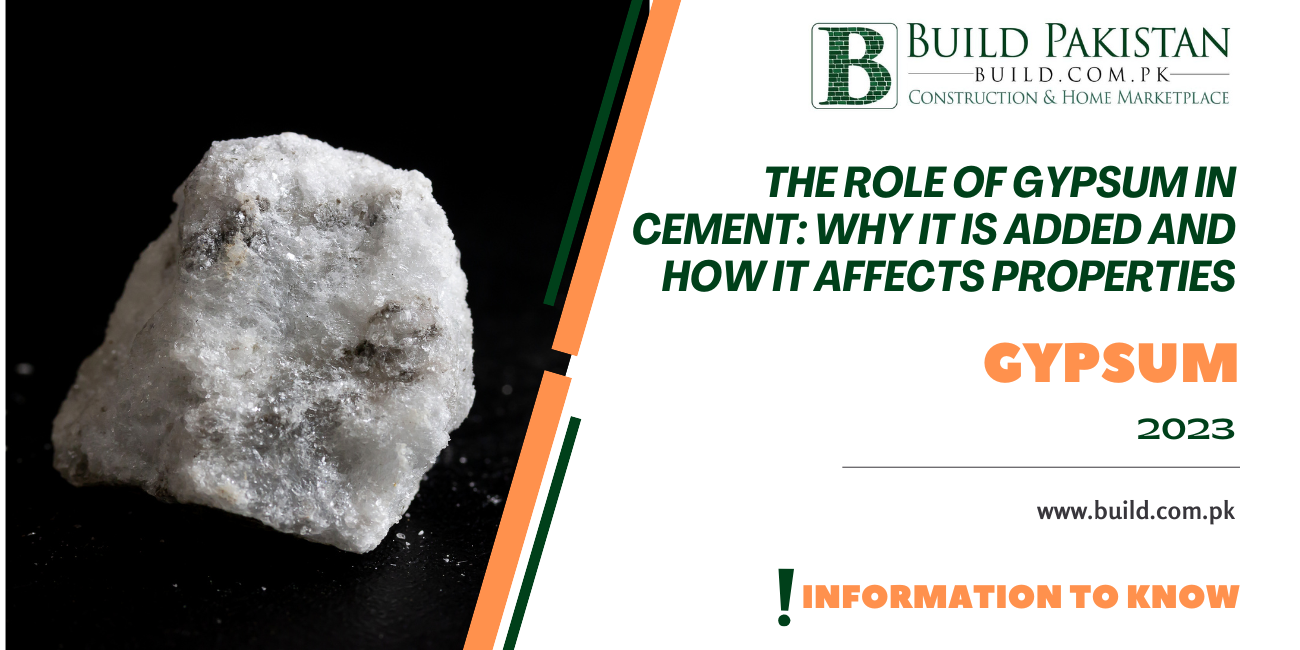The Role of Gypsum in Cement: Why it is Added and How it Affects Properties

Introduction:
Cement is a crucial building material used in the construction industry for various applications. It is a composite material made from a mixture of Portland cement, aggregates, water, and additives. One common additive in cement production is gypsum, a soft sulfate mineral that is added during the grinding of clinker to improve the workability and properties of cement. In this blog, we will explore the role of gypsum in cement production, why it is added, and how it affects the properties of cement.
Uncover the Chemistry and Function of Gypsum in Cement Production
Chemistry of Gypsum in Cement:
Gypsum, or calcium sulfate
dihydrate (CaSO4•2H2O), is a soft sulfate mineral that is widely used in the
construction industry. It is added to cement as a retarder, which means it
slows down the setting time of cement. The chemistry behind this is that when
gypsum is added to cement, it reacts with the tricalcium aluminate (C3A) in
cement to form ettringite, which then acts as a crystal growth inhibitor for
the tricalcium silicate (C3S) in cement. This reaction slows down the setting
time of cement, making it easier to work with.
The function of Gypsum in Cement:
Gypsum is added to cement for various reasons, including:
Retarder:
As mentioned earlier, gypsum acts as a retarder in
cement, slowing down the setting time and allowing for more time to work with
the material. This makes it easier for construction workers to handle and mold
the cement into the desired shape.
Control of Setting Time:
Gypsum is added to control the
setting time of cement, preventing it from setting too quickly or too slowly.
Improved Workability:
Gypsum improves the workability of
cement by reducing the amount of water needed for a given mix. This makes the
cement more fluid and easier to handle, reducing the risk of cracking and
shrinkage.

Properties of Cement with Gypsum
Gypsum has a significant
impact on the properties of cement. When added in the correct amount, it can:
Improve Strength:
Gypsum helps to improve the compressive
strength of cement, making it more durable and able to withstand greater
stress.
Reduce Curing Time:
Gypsum can help reduce the curing time of
cement, allowing it to gain strength more quickly.
Increase Density:
Gypsum can increase the density of cement,
making it more resistant to water and other environmental factors.

Effects of Too Much Gypsum
While gypsum has many benefits
when added in the correct amount, adding too much can negatively affect cement's properties. These include:
Reduced Strength:
Adding too much gypsum can reduce the
compressive strength of cement, making it less durable and more prone to cracking
and failure.
Delayed Curing:
Excessive amounts of gypsum can delay the
curing time of cement, making it take longer to reach full strength.
Increased Risk of Cracking:
Adding too much gypsum can
increase the risk of cracking and shrinkage, as the excess gypsum can weaken
the cement and reduce its ability to withstand stress.

Conclusion:
Gypsum is an important additive in cement production, used to improve the workability and properties of cement. By slowing down the setting time of cement and improving its workability, gypsum makes it easier to handle and mold into the desired shape. When added in the correct amount, gypsum can improve the compressive strength, reduce curing time, and increase the density of cement. However, adding too much gypsum can have negative effects, including reduced strength, delayed curing, and an increased risk of cracking and shrinkage. It is crucial to add the correct amount of gypsum to cement to achieve the desired properties and performance. Cement manufacturers carefully control the amount of gypsum added to cement to ensure the optimal properties are achieved.
Summary:
Gypsum plays a significant
role in cement production, and its addition should be carefully controlled to
maximize the benefits and avoid potential problems. Understanding the chemistry
and function of gypsum in cement production can help construction professionals
make informed decisions about the type of cement to use for a given project.









